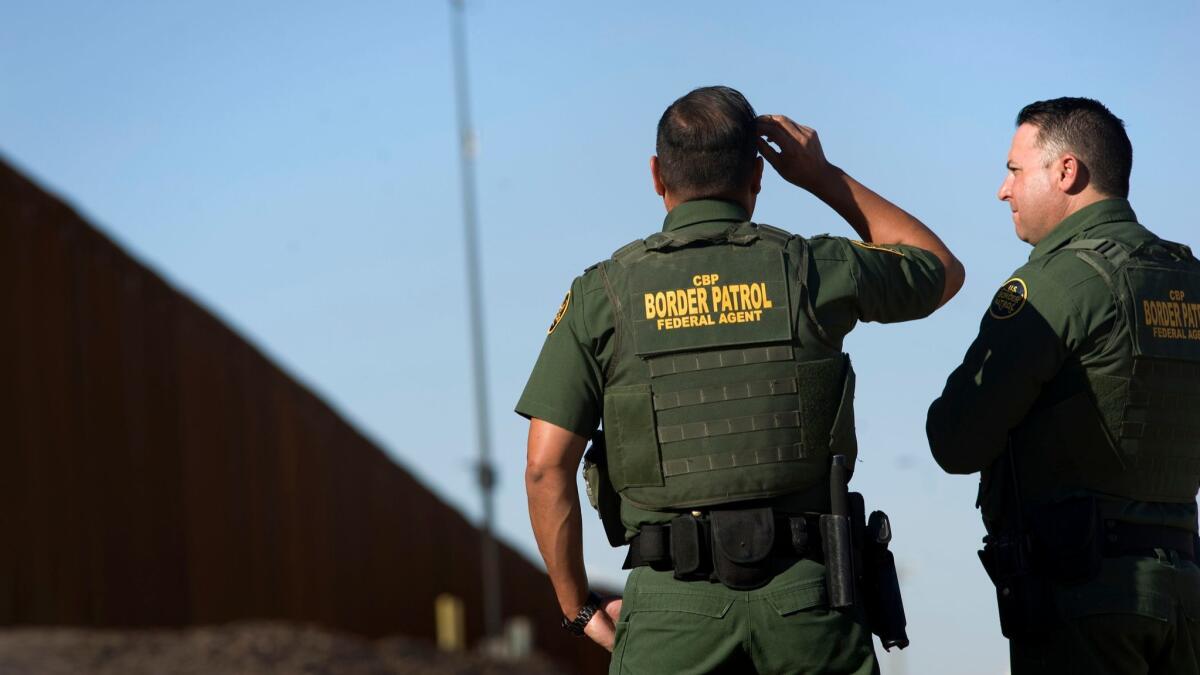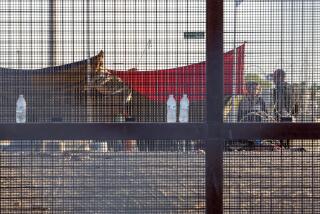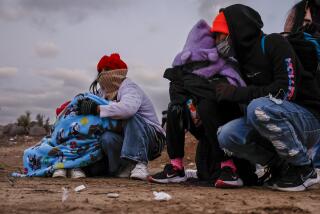ICE is speeding up release of migrating families despite tough rhetoric

The federal government has begun shifting the burden of managing an influx of immigrant families on the border to local organizations and cities across the Southwest border.
President Trump is reportedly contemplating a ban on asylum seekers on the Southwest border, and he has railed against the idea of “catch and release” — detaining people who arrive at the Southwest border only to let them go into the United States while they pursue cases in immigration court — but his administration’s latest plan for asylum-seeking families would release them more quickly.
While annual apprehensions are still below 2014, the last major surge in families and unaccompanied children, and far below totals decades ago, the number of families coming to the Southwest border has increased.
Border Patrol agents apprehended more than 16,600 family members in September, the most recorded in a single month since the agency began tracking family arrivals in fiscal 2013.
In the past, when a family was in custody at the Southwest border, Immigration and Customs Enforcement officers would review a family’s plans for living in the United States, including calling the person whom the family planned to live with and helping with travel arrangements. ICE announced this week that because of the number of families arriving, its officers will no longer conduct these reviews.
That means families will be released more quickly and in larger numbers, a policy dubbed “coordinated release” that has quietly been rolled out across the Southwest since early October when it began in Arizona. It also means families may have less guidance about how to get to their final destinations so that they can show up for their court dates.
Some migrant advocates wondered if the move could have a political motive to create chaos at the border shortly before voters go to the polls in high-stakes midterm congressional elections.
Groups in Texas, where the largest numbers of families arrive, were already straining to manage increased releases they saw this week, and they worried those numbers would only go up in the coming days.
The statement that ICE officials provided explaining the policy change blamed Congress and a court ruling that says they can hold children in detention centers for only up to 20 days. The Trump administration has pushed for extended family detention and more bed space to hold all of the new arrivals until their immigration court cases finish.
“We’re out of space unfortunately, given all of the increase in numbers,” Homeland Security Secretary Kirstjen Nielsen told CNN earlier this month.
The country’s three family detention centers are 54% full, with 1,977 beds occupied out of 3,654, according to the latest ICE figures. But the agency’s budget funds 2,500 family detention beds a day, and families can require added space because those of different ages and genders are housed separately.
“Family units continue to cross the border at high volumes and are likely to continue to do so, as they face no consequence for their actions,” the statement said. “To mitigate the risk of holding family units past the time frame allotted to the government, ICE began curtailing all reviews of post-release plans from families apprehended along the Southwest border starting on Tuesday.”
ICE said it will work with local and state officials “so they are prepared to provide assistance with transportation and other services.”
Families will be released with ankle bracelets and notices to appear in court, ICE said. That has already happened regularly in California, which doesn’t have any family detention centers.
Along certain parts of the border, Homeland Security has been working with immigrant shelters for years, giving them time to find space for migrants and make travel arrangements before dropping immigrants on their doorsteps.
But in El Paso this week, Homeland Security officials notified shelters that they will no longer wait to release the immigrants, leaving them on city streets instead, since they have run out of space in temporary holding areas.
Ruben Garcia, director of El Paso’s Annunciation House shelter, said 20 of the immigrants arrived there Thursday, having paid for a taxi to the shelter after they were dropped elsewhere. He expects more to arrive in coming days because the shelter is well known, and has already contacted El Paso emergency management officials requesting a temporary shelter with 200 cots.
“It’s going to be in your lap,” Garcia told city officials. “The unknown factor in this is are cities going to get involved?”
The financial burden could be significant based on the rising number of arriving families.
Border cities have helped foot the bill in the past for emergency shelters and services for immigrant families, especially during the last major influx in 2014. But it wasn’t initially clear how they would respond now, with voting already underway in politically charged midterm elections in which immigration has become a central issue.
In San Diego, volunteers who bring food and toiletries to migrant families waiting at a bus station after being released from custody said that they saw more families than usual.
On Friday evening, a Guatemalan father appeared with his 9-year-old son at the San Diego bus station after coming to the port of entry two hours away in Calexico, Calif. They had spent about a week in the hielera, or “icebox,” as immigrants call the chilly temporary holding cells before getting on a bus to San Diego.
They were waiting to go back east to Arizona.
The volunteers did not find any families who had crossed in the San Diego area despite the constant line of asylum seekers waiting to come in at the San Ysidro port of entry.
Paula Sassi, one of the volunteers, said the group is waiting to see how the changes take effect and plan to adjust accordingly to keep helping the newly released families.
She and another volunteer, Mimi Pollack, worried ICE would stop bringing families to the bus station, leaving them at the San Ysidro port of entry about 15 miles south on the highway.
“That is going to be a mess,” Pollack said.
If ICE makes that decision, both women agreed, they would make the drive down to the port to distribute their supplies.
Past influxes have strained local immigrant advocacy groups. When Haitians began arriving in larger-than-usual numbers from Brazil in 2016, a church in San Diego’s Normal Heights neighborhood offered to house them. The church, a member of the San Diego Immigrant Rights Consortium, housed about 200 people per night until it eventually asked the community for help. The National Guard stepped in with temporary shelters, and community members donated money and supplies.
ICE has been meeting with the San Diego Immigrant Rights Consortium to sort out details for the new process.
Lilian Serrano, chair of the group, said they’re ready to care for the new arrivals.
“Families fleeing serious, life-threatening situations risk everything to reach our borders for the chance to ask for protection,” she said. “It is our moral and legal obligation to uphold basic human rights and to treat everybody with compassion, dignity and respect.”
More to Read
Sign up for Essential California
The most important California stories and recommendations in your inbox every morning.
You may occasionally receive promotional content from the Los Angeles Times.











